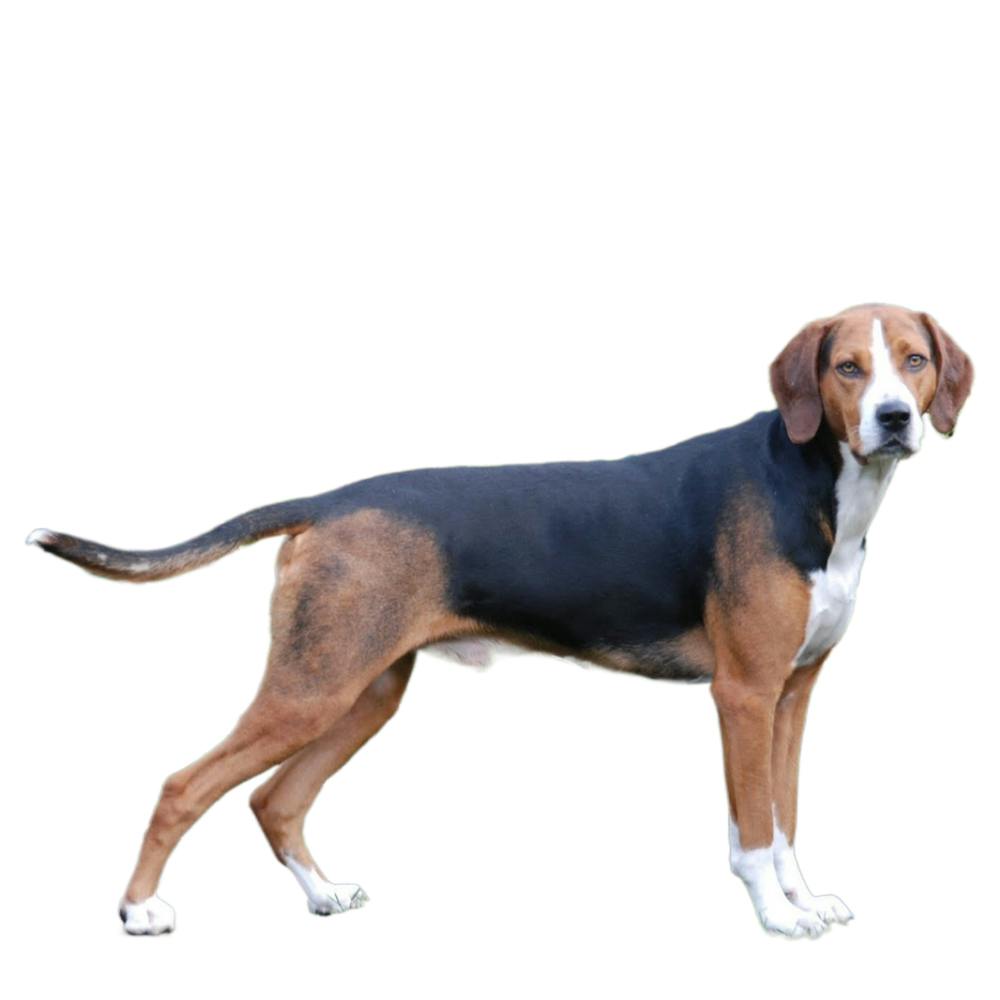
German Hound
The German Hound, also known as Deutsche Bracke, is a small to medium-sized breed that hails from the Westphalia region of Germany, where it was used primarily as a scent hound. Originating in the 18th century, this breed was utilized for hunting game like wild boar, hare, and deer in the mountainous regions of Germany. The German Hound was officially recognized by the Federation Cynologique Internationale (FCI) in 1955. However, it remains relatively uncommon outside of its homeland.
- Origin
- Germany
- Alternate Names
- Deutsche Bracke, Olpe Bracke, Sauerländer Bracke, Westphalian Bracke
- Life Expectancy
- 10-12 years
- Average Male Height
- 15.5-21 inches
- Average Female Height
- 15.5-21 inches
- Average Male Weight
- 42-44 pounds
- Average Female Weight
- 42-44 pounds
- Coat Length
- Long
- Coat Type
- Dense
- Coat Colors
- Red through Yellow, with Black Blanket or Saddle
- Coat Pattern
- White 'Bracken' Markings (Blaze, White Muzzle, White Neck Ring, White Chest, Legs and Tip of Tail)
Genetic Predispositions and Health
German Hounds are fairly healthy dogs, but can suffer from hip dysplasia, degenerative myelopathy, progressive rod-cone degeneration, and chondrodystrophy and intervertebral disc disease (CDDY and IVDD risk) with or without chondrodysplasia (CDPA). As for all breeds, genetic screening is recommended to assist veterinarians with diagnosis and proactive care, as well as help breeders identify affected and carrier dogs.
Personality and Behavior
German Hounds are known for their keen sense of smell, tenacity, and excellent tracking skills. They are typically active, friendly, and get along well with humans and other dogs. However, due to their hunting heritage, they may have a high prey drive and might not be suitable for homes with small pets. These dogs are intelligent and trainable, but they need regular physical and mental stimulation to keep them happy and prevent boredom. They are usually good with children and make for affectionate family pets when properly trained and socialized.
Fun Facts
The German Hound is known as "Deutsche Bracke" in German, which literally translates to "German Hound". The term "Bracke" was used in the olden times to refer to a wide range of scent hounds.
Unlike many other scent hounds, German Hounds are known for "baying" or making a unique howling sound when they have picked up a scent. This trait is common among many scent hounds and was traditionally used to alert hunters to the presence of game.
Despite its hunting background, the German Hound is not a high-energy breed and adapts well to living in apartments, provided it gets enough exercise.
References
https://www.ukcdogs.com/deutsche-bracke
https://www.fci.be/Nomenclature/Standards/299g06-en.pdf
https://vgl.ucdavis.edu/test/cddy-cdpa